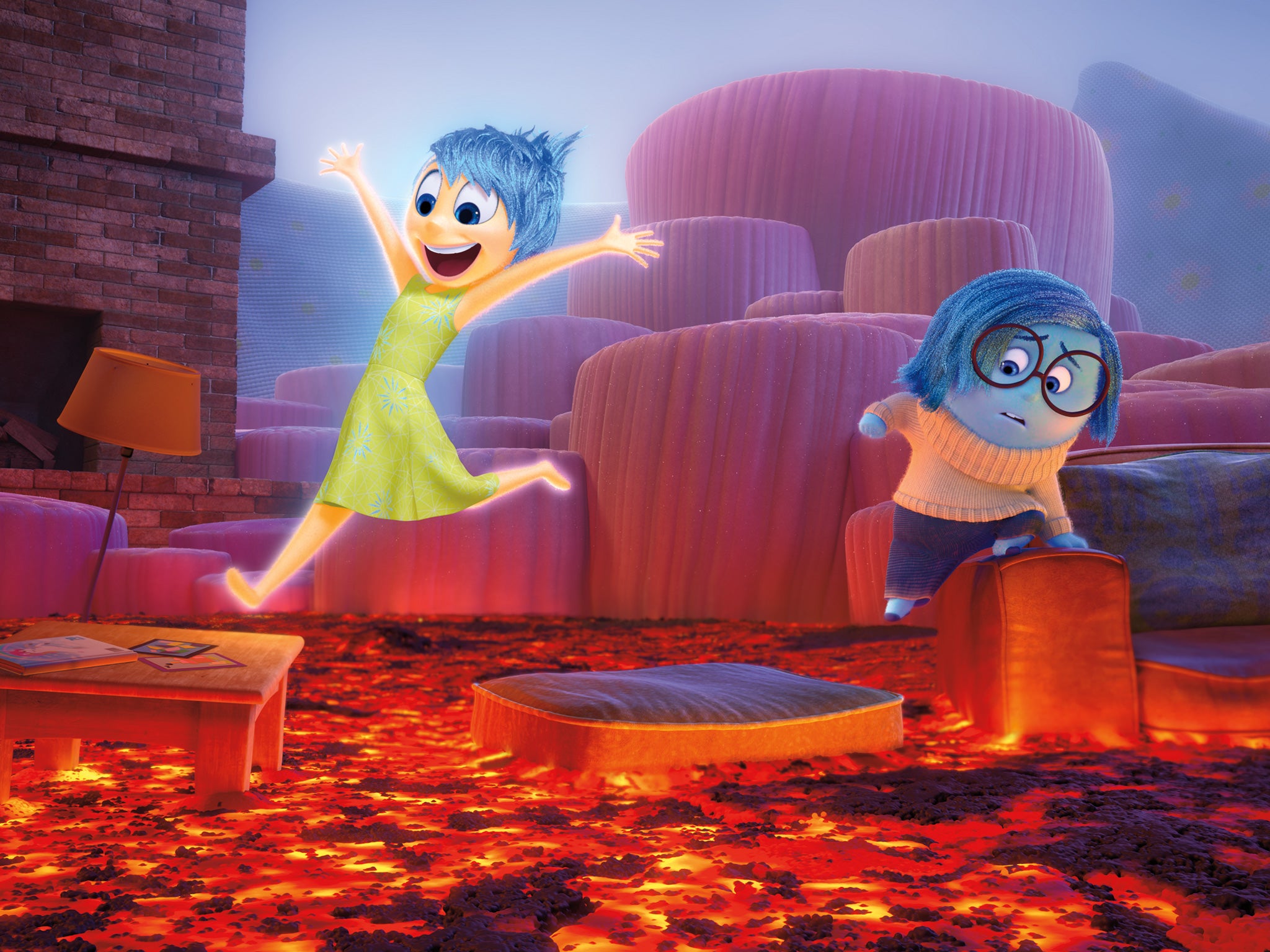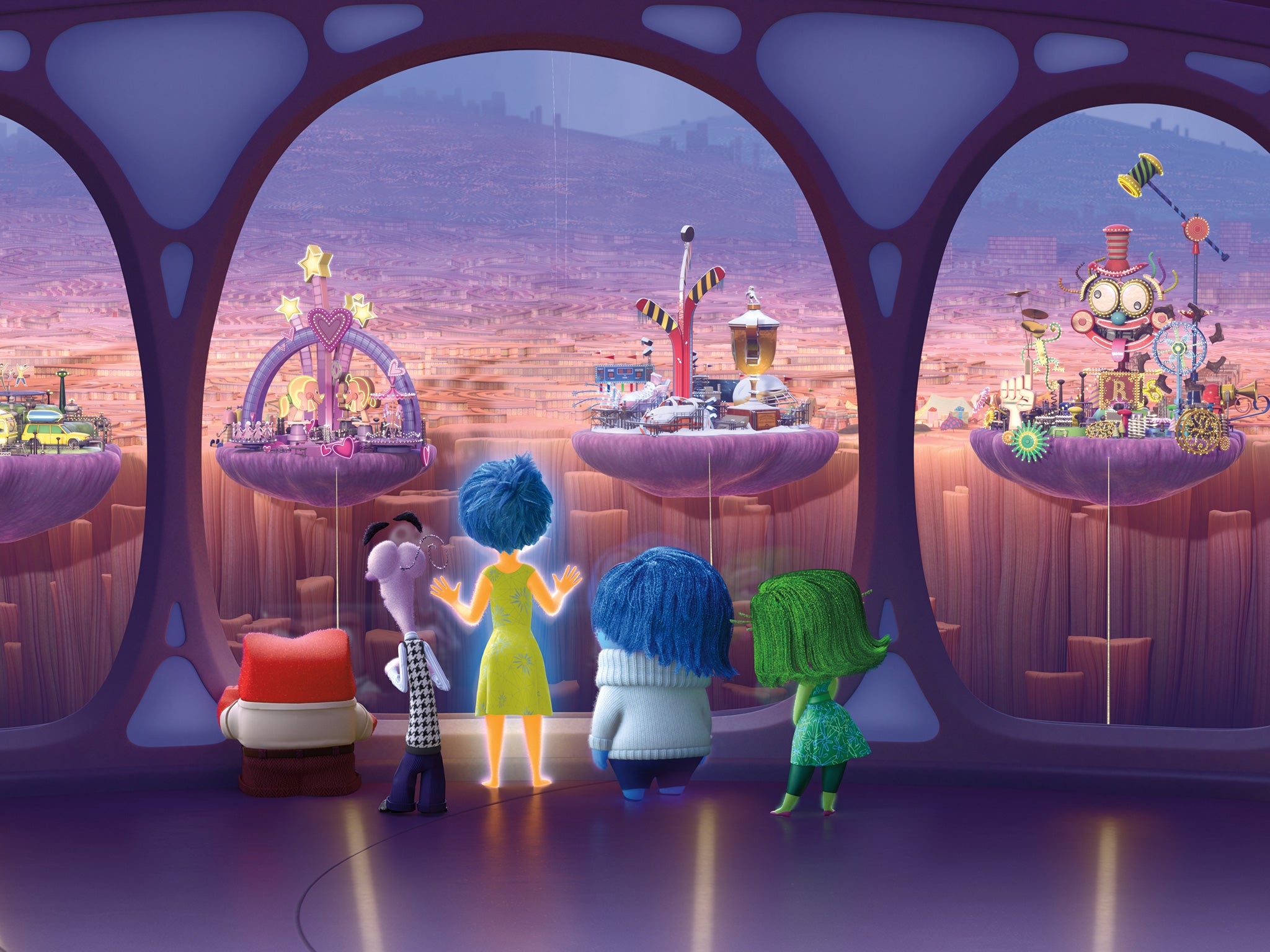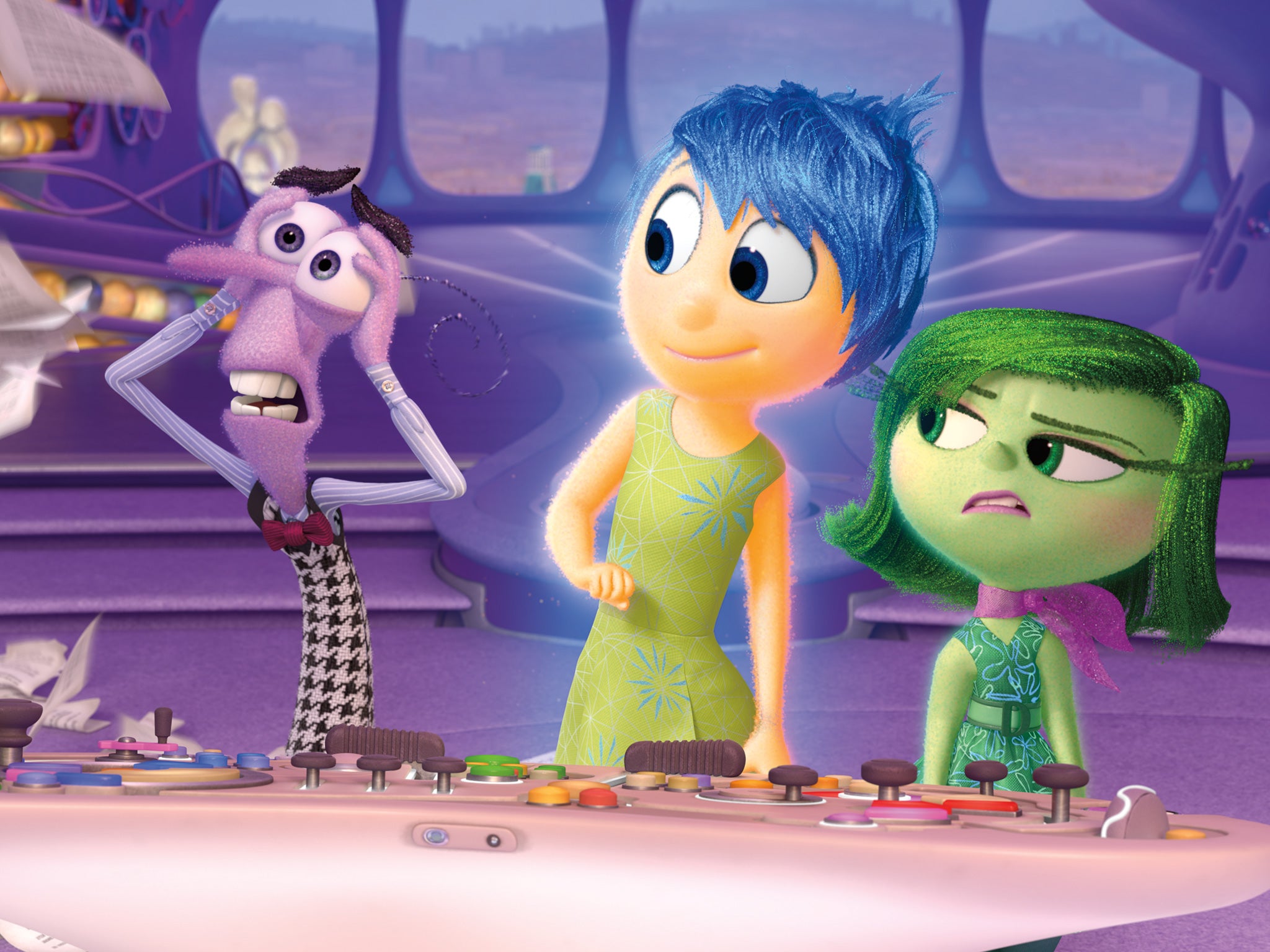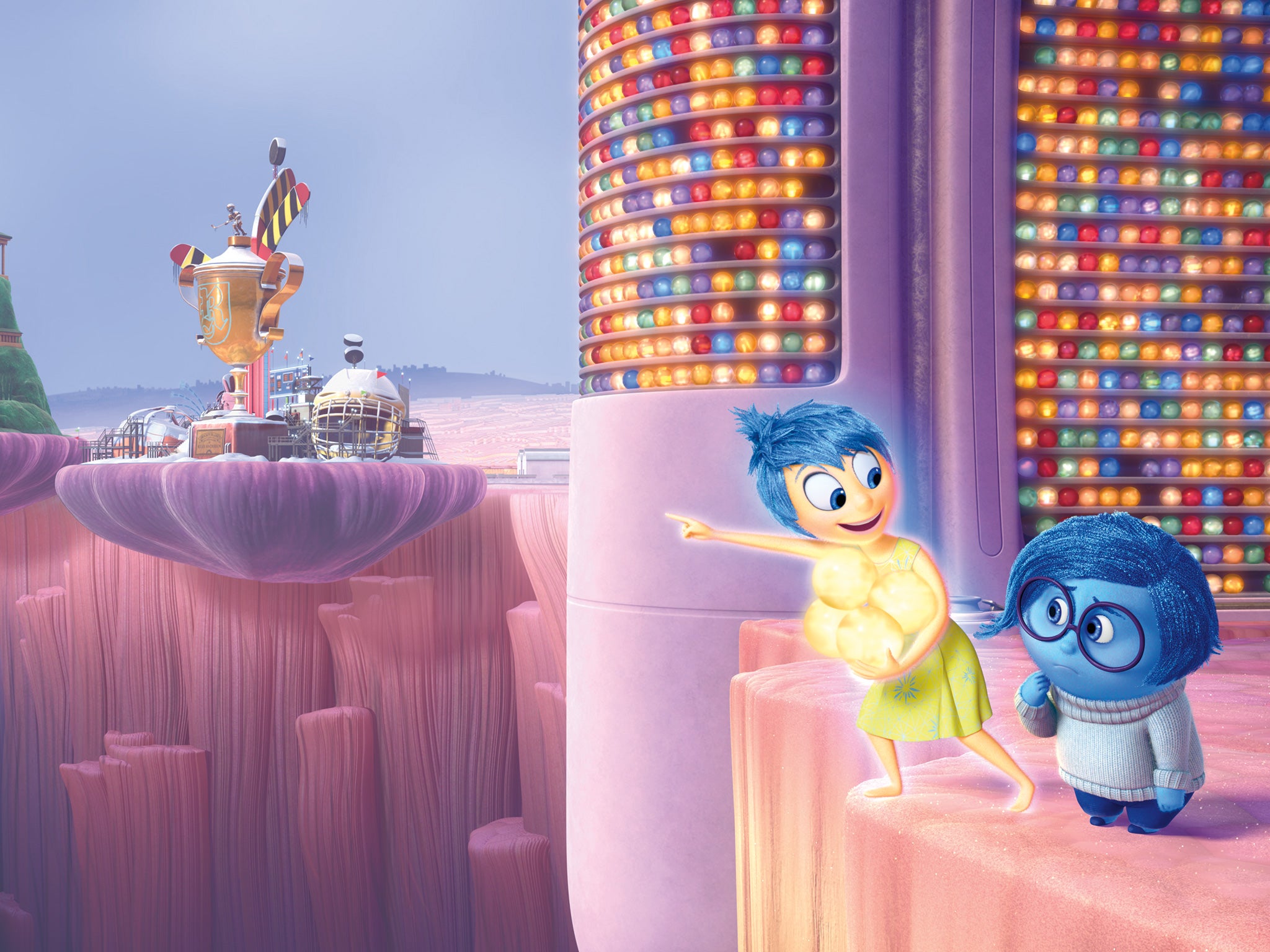Inside Out: Pixar's latest work of wonder depicts the inner workings of a child's mind – so what do child psychiatrists make of it?
The film tackles the barrage of emotions that comes with pre-adolescence

Your support helps us to tell the story
From reproductive rights to climate change to Big Tech, The Independent is on the ground when the story is developing. Whether it's investigating the financials of Elon Musk's pro-Trump PAC or producing our latest documentary, 'The A Word', which shines a light on the American women fighting for reproductive rights, we know how important it is to parse out the facts from the messaging.
At such a critical moment in US history, we need reporters on the ground. Your donation allows us to keep sending journalists to speak to both sides of the story.
The Independent is trusted by Americans across the entire political spectrum. And unlike many other quality news outlets, we choose not to lock Americans out of our reporting and analysis with paywalls. We believe quality journalism should be available to everyone, paid for by those who can afford it.
Your support makes all the difference.Pixar, the animation studio that rose to prominence with 1995’s Toy Story, has humanised rats, cars, toys, robots, fish and monsters. So it’s striking to realize that Inside Out, the Disney-owned studio’s latest work of wonder, is a film about being human. Being a child, specifically – one confronting the confounding barrage of emotions that comes with pre-adolescence. Riley, our 11-year-old hero, is lovable enough but devastated by her family’s business-driven move from Minnesota to San Francisco. So she plots a revolt.
And that’s pretty much it for primary plot. The bulk of the action takes place in Riley’s head, which is not to say that it’s from her point of view but that we’re physically in her brain. There, a team of anthropomorphic emotions – Joy, Anger, Disgust, Fear, Sadness – sift through a fantastical memory-storage apparatus and fight to stabilise Riley’s mental state. The surreal brain landscape (a film studio for dreams, an island of personality) and the voice actors (Amy Poehler plays Joy, Mindy Kaling is Disgust) keep the concept from tripping over itself; true to emotional form, this little film is joyful and sad and fearful all at once.
Inside Out is perhaps the only major motion picture ever to deal so directly with the inner workings of a child’s mind. So we sent six child psychiatrists to the film (separately), wondering what they’d make of its depiction. Surprise: they mostly loved it. Though defiantly unscientific, Inside Out, it turns out, is filled with genuine insight on child emotional development.

“I’ve never seen a movie like this that talks about the brain and the emotional part of the brain in kids,” said Dr Fadi Haddad, who opened one of the first child psychiatric emergency rooms in the US. Dr Haddad was struck by the chaotic interplay between Riley’s emotional components: “You can be angry and sad at the same time. You can be happy and afraid. Those emotions are very difficult for kids to understand.”
Dr Elisabeth Guthrie, a child psychiatrist who teaches at Columbia University Medical Centre, plans to use the film in sessions with children. “I thought it was helpful in putting feelings into words, for helping kids identify their feelings and start a dialogue about it,” Guthrie said. “If a kid is feeling sad or if a kid is acting out and they’ve seen that movie, I can use that as a reference point.”
Sadness, both a nuisance and a downer, proves its (and her?) worth as the film progresses; Joy realises that Riley can’t adequately communicate her mental state without it. Several experts emphasised the lesson that plot point contains.
“I like the idea that basically Sadness saved the life of this child,” Dr. Haddad said. “I thought that was a brilliant ending in the movie, to see the importance of having a feeling like Sadness. That’s what connects us many times to families, to sad events, to friends, to understanding the meaning of empathy.”
“The thing that it really highlighted was how important emotions are – not just the positive and happy ones,” added Dr Erica Chin, a clinical psychologist who works in the child and adolescent psychiatry unit of Morgan Stanley Children’s Hospital. “Early in the movie – I don’t remember the exact quote – but the parents are like, ‘Be my strong girl.’ So I was taken with the fact that the movie put in the position that sadness is OK and sadness is reasonable to feel.”
Dr Kevin Kalikow, a child psychiatrist who (full disclosure) once saw this reporter as a four- or five-year-old patient, echoed the point: “Parents who are always expecting their child to be happy, that’s not a helpful perspective.” But he wished the film had more acknowledgment of differing temperaments.

Watch Apple TV+ free for 7 days
New subscribers only. £8.99/mo. after free trial. Plan auto-renews until cancelled

Watch Apple TV+ free for 7 days
New subscribers only. £8.99/mo. after free trial. Plan auto-renews until cancelled
“Not everybody is born with the same control panel as everybody else,” Dr Kalikow said. “Some people are born happier. Some people are born more irritable.”

Given Riley’s particular cocktail of feelings, “I think what the character was trying to portray was what we call childhood depression,” said Judith F Joseph, a child and adolescent psychiatrist. “That’s pretty accurate in terms of what you see with depressed pre-teens: social withdrawal, lack of friendships…”
There is also the depiction of memories. Inside Out imagines them as colour-coded, marble-like spheres maintained in a massive storage facility. (It looks a little bit like the sprawling Department of Mysteries, in Harry Potter.) Crucially, they’re not fixed; a visit from Sadness can turn a happy memory sad, an aspect of the film that’s been praised by neuroscientists. That’s right on, said Dr Chin: “Memories are not so concrete... I think they did a good job of capturing that memories can be reframed. As therapists we’re often saying, ‘Can you look at this memory and see it from a different perspective.’”
Dr Haddad noticed how Riley became confused by her own bright memories, thinking that a return trip to Minnesota would restore her to happiness without the family that made her happy. “We see children who run away from home because they have fights with their parents, but they miss the point that that connection was what made them happy,” he said.
While washing dishes after seeing the film, Dr Kalikow found himself laughing as he imagined the memories then popping into his head as little marbles. He liked Inside Out’s depiction of the subconscious. “It really does a great job of elucidating, in a way that’s visual, all the different parts of the brain.”
Just as imaginitively, dreams are shown as surreal productions thrown together in a slapdash movie studio, with actors hopping in and out. The resulting dreams shift from happy to sad to frightening with manic abandon. “All things can exist as true simultaneously,” said Dr Oliver Stroeh, the associate director of the Child and Adolescent Psychiatry Residency Training Programme at New York-Presbyterian Hospital. “I thought the idea of filters was particularly clever. There’s presumed objective reality, but then it gets distorted in our minds.”

Every psychiatrist seemed to love the film, even with its non-scientific quirks and oddities. But some of them issued disclaimers.
“There are no little people in children’s heads pushing buttons and controlling emotions,” Dr Joseph stressed. “But I thought that the spirit of it was in the right place.”
“It was fun to see the few trillion synapses that are in a person’s brain be reduced to funny little characters and a graphic typography of mountains and holes and buildings and islands,” said Dr Kalikow. “It shouldn’t replace neuro-anatomy in medical school,” he said. “But it’s still a lot of fun to watch.”
© Newsweek
Join our commenting forum
Join thought-provoking conversations, follow other Independent readers and see their replies
Comments